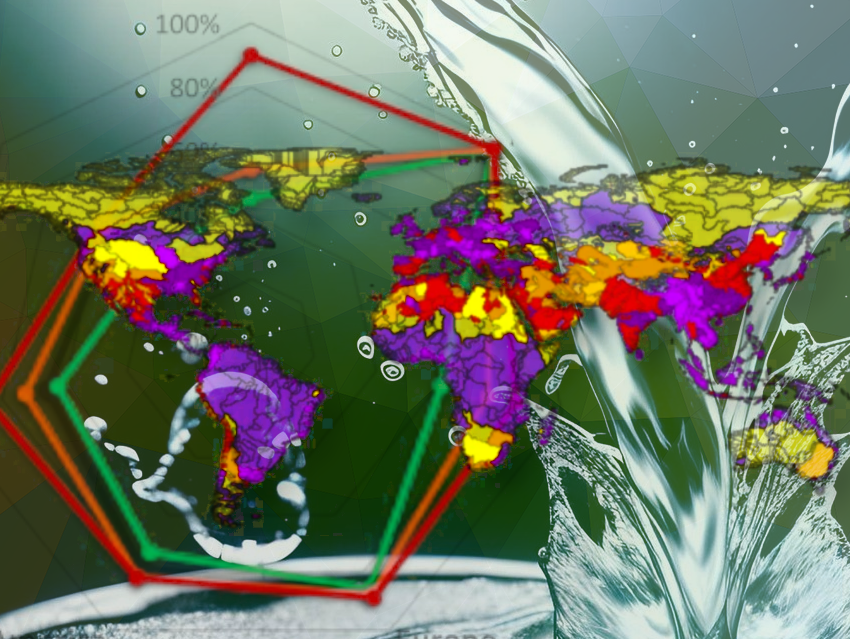Water is an essential resource for life and nature. Yet only 0.02% of the world’s water is available to people, plants and animals. Climate change is affecting water availability. Urbanization and agricultural activities are increasing water demand and pollution. Until a few years ago, assessments of global water scarcity focused mainly on changes in the quantity of water available. However, declining water quality has also become an important reason for limiting water availability.
Mengru Wang, Wageningen University & Research, The Netherlands, and colleagues have made a global assessment of future clean-water scarcity for the 2050s by adding the water pollution aspect to the classical water quantity-related scarcity assessments. The team defineed “clean water scarcity” as the availability of surface water of acceptable quality. The assessment was done for >10,000 sub-basins worldwide based on their river discharges (water quantity) and nitrogen pollution levels (water quality).
They combined the MARINA-Nutrients (Model to Assess River Inputs of pollutaNts to seAs), MAgPIE (Model of Agricultural Production and its Impact on the Environment), and VIC (Variable Infiltration Capacity) models into an integrated modeling framework. They looked at three scenarios for 2010 and 2050 assuming different storylines of climate change and socio-economic activities that affect water scarcity.
The team found that water pollution increases water scarcity in over 2000 sub-basins globally. Future nitrogen pollution is projected to triple the number of sub-basins facing water scarcity. When only quantity-induced scarcity is considered, 984 sub-basins are classified as water scarce in 2010. This number increases to 2517 when both quantity and quality factors are considered, and could reach 3061 by 2050 in the worst case scenario. This increase means an additional 40 million km2 of basin area and potentially 3 billion more people facing water scarcity in 2050.
According to the researchers, their findings highlight the urgent need to address water quality in future water management policies for the Sustainable Development Goals (SDGs).
- A triple increase in global river basins with water scarcity due to future pollution,
Mengru Wang, Benjamin Leon Bodirsky, Rhodé Rijneveld, Felicitas Beier, Mirjam P. Bak, Masooma Batool, Bram Droppers, Alexander Popp, Michelle T. H. van Vliet, Maryna Strokal,
Nat. Commun. 2024, 15, 880.
https://doi.org/10.1038/s41467-024-44947-3




